Restoring Hampton’s Streetcar 390: Reviving Transit History
In a small garage, tucked in the back of a non-descript building at Fort Monroe, a piece of Hampton Roads history is coming back to life. Piece by painstaking piece, a team of volunteers is restoring an old streetcar.
Hampton’s Streetcar 390 Project is a labor of love that has been ongoing since 2017. Volunteers assemble every Saturday to strip, stain, and sand a 100-year-old streetcar. It’s a bumper-to-bumper restoration with the goal of displaying it in front of the Hampton History Museum for everyone to enjoy.
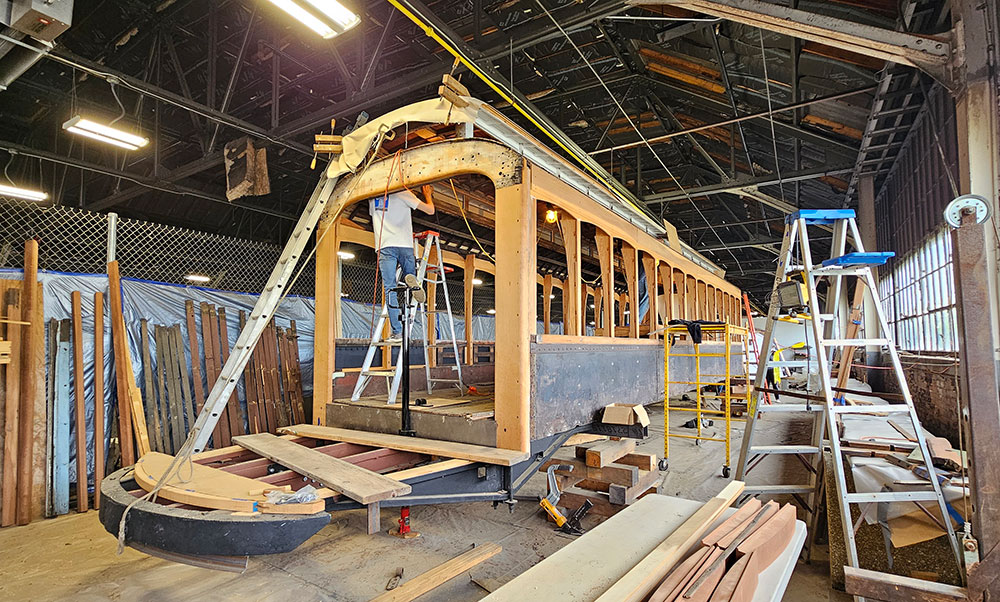
As you can imagine, this restoration project is a monumental task. “We have to raise our own funds for the project,” said Greg Siegel, chair of the Hampton Streetcar 390 Project. “Once this restoration is complete and our display building is complete, we’ll turn it over to the museum to manage and program the streetcar.”
Electric streetcar service began on the Peninsula in 1884. Initially, it ran from downtown Hampton to Fort Monroe. Service was eventually extended to the shipyard in Newport News.
It cost five cents to ride. According to Siegel, the company that operated the streetcar tried to raise the fare at one point, but the city councils did not approve. Instead, they opted for “zone fares” where riders paid a five-cent fare for each zone traveled: Phoebus, Hampton, or Newport News. Depending on the length of the trip, the rider could pay as much as 30 cents roundtrip. The shipyard offered coupon books to workers which brought the fare down to around 3 ½ cents.
Streetcar service ended on the Peninsula on January 13, 1946.
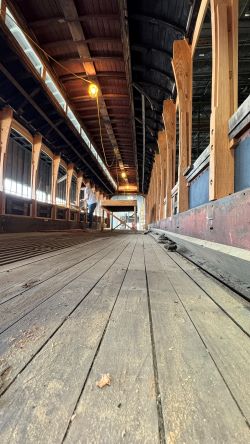
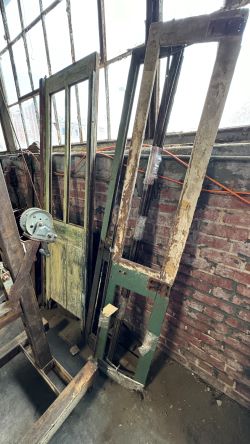
While Streetcar 390 was no longer serving residents on the Peninsula, it found a new purpose serving as someone’s home. The car was purchased for about $200 by York County resident John Anderson. The Anderson family placed the car on a plot of land along Route 17 in Grafton and converted it into a one-bedroom home complete with a kitchen and living room. The Andersons called Streetcar 390 their home for 30 years.
In the late 1970s, the streetcar was acquired by the Baltimore Streetcar Museum. Museum officials were interested in this streetcar because despite having hundreds of cars in their collection, they did not have a Baltimore-designed streetcar.
The museum fully intended to restore Streetcar 390, but a series of unfortunate events left it sitting in storage for decades, untouched. The museum offered to give the car to the City of Hampton in 2013 if the city agreed to complete the restoration. It took four years to raise enough money to bring the car from Baltimore to Hampton where it sits today at Fort Monroe.
In 2019, the restoration of Streetcar 390 began in earnest. Siegel relies on an all-volunteer staff.
Mar’quis Bryant-Morgan, head of the Volunteer Committee at Newport News Shipbuilding, is new to the project. He spent his Saturday morning disassembling old seat cushions, looking for usable springs. “I love to volunteer, and I love to give back,” said Bryant-Morgan.
“Understanding a bit of the history of the streetcar, I believe that it was important for me to be here.”
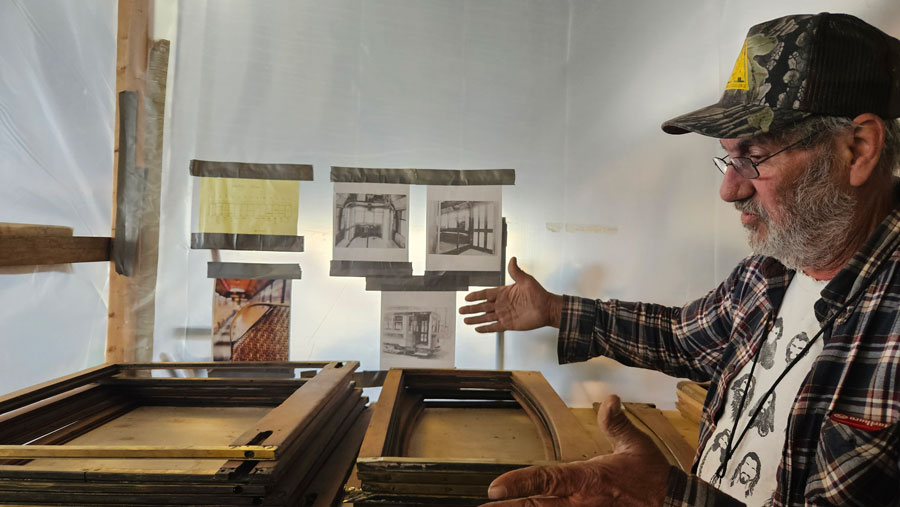
Henry Mummert, with BAE Systems, is a Baltimore native and has a special affinity for this project. He’s been volunteering his time to the restoration since before 390 arrived in Hampton and was instrumental in helping bring the car back from Baltimore. He calls Streetcar 390 the “great granddaddy of the Tide,” and says, “if this streetcar could talk, it would have a lot to say.”
“It took many shipyard workers to work. They used it through World War I, World War II, and the Great Depression,” said Mummert.
According to Mummert, they’ve found several treasures during the restoration process, including a World War II ration token underneath the floorboard.
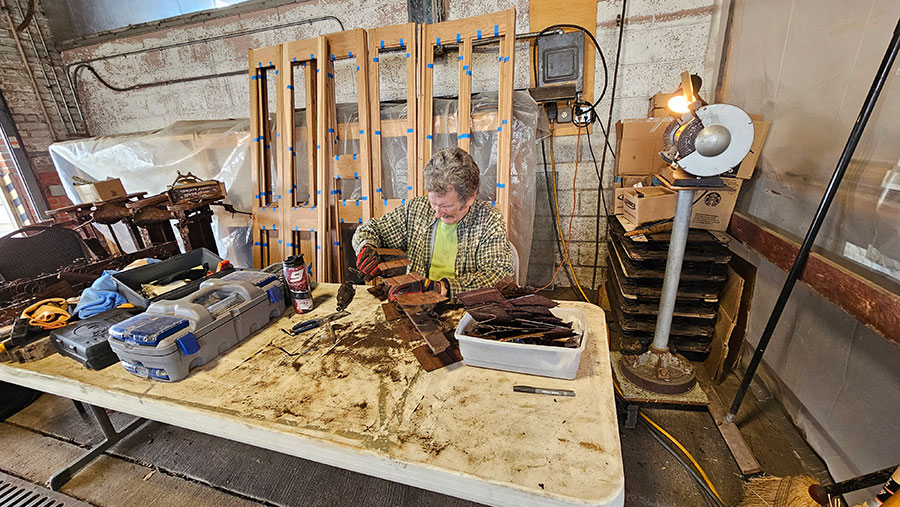
Dan Porter has been a volunteer on the project for a little over two years now. A retired civil engineer, he was looking for something to do when he saw a post on social media asking for volunteers. As he sorted through hundreds of seat cushion springs, Porter marveled at the workmanship.
This streetcar was “built to last,” said Porter. “You don’t see that level of craftsmanship anymore.”
Porter also took a moment to ponder the past. “The people that did that are long dead. And the people that rode in the car are dead. And it’s kind of interesting to me to look at it and go, ‘I bet the people that riveted this probably had no idea that a hundred years later it would be getting restored.’”
According to Siegel, the restoration is about 60 percent complete. And after all their years of hard work, Porter says he’s looking forward to the day the streetcar is on display.
Q-Design out of Fort Monroe has been tasked with designing the pavilion to house Streetcar 390. The glass and steel structure will stand in front of the Hampton History Museum. It’s being designed to look like the original streetcar barn that used to sit at what was called Electric Avenue. It’s now the home of Hampton Roads Transit’s Headquarters on Victoria Boulevard in Hampton.
Siegel is always looking for volunteers and donations to help move the Streetcar 390 Project along. You can learn more by visiting the project’s Facebook page or by picking up a copy of Siegel’s book, “The One That Survived: The Story of Streetcar 390 and the Era of Streetcar Service on the Lower Peninsula.”





